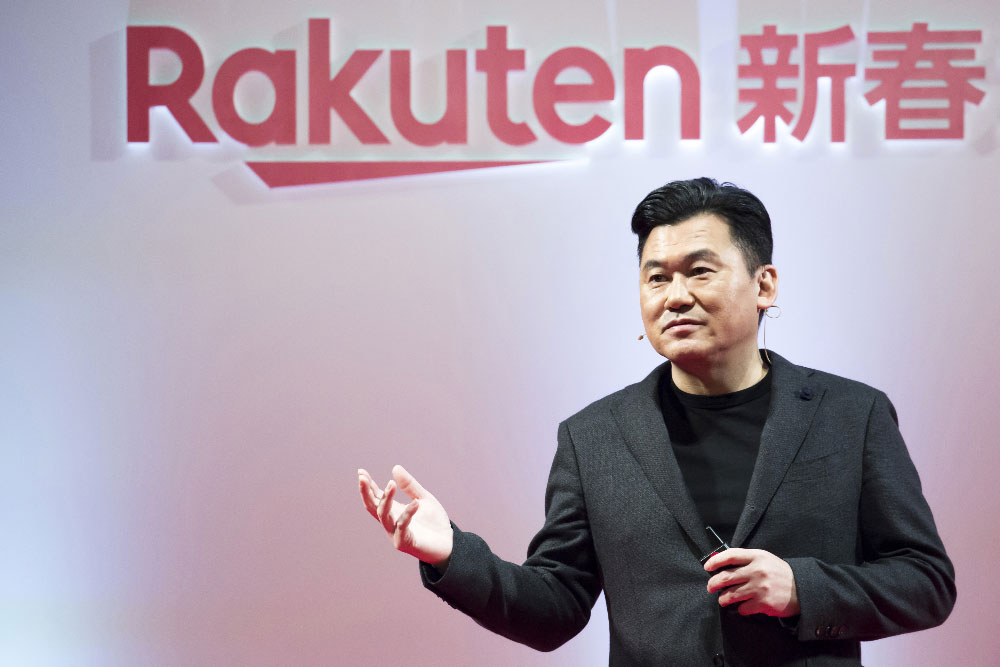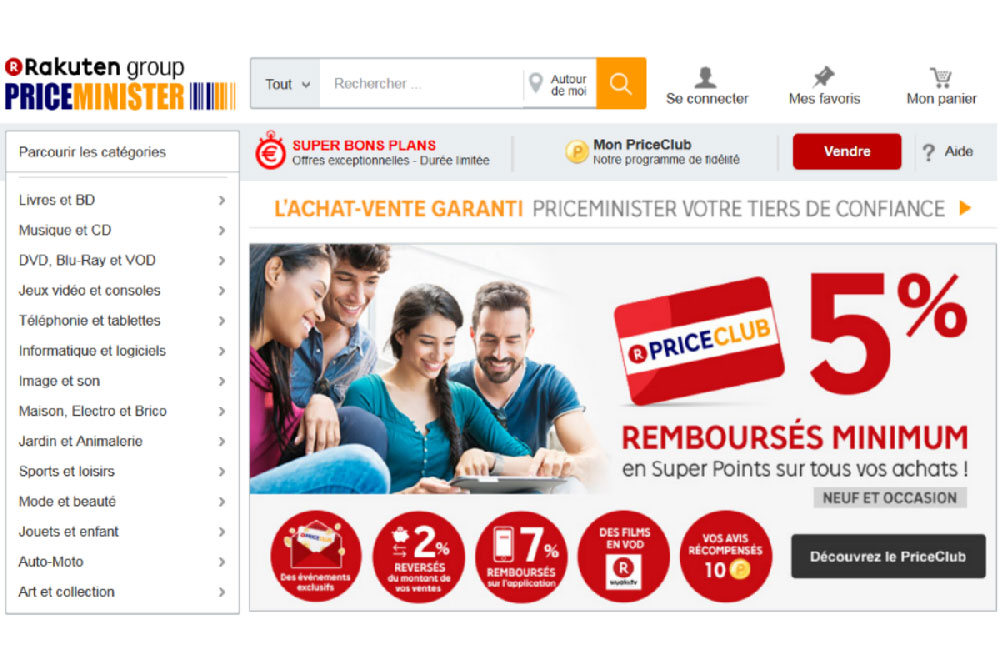Starting a business from scratch and growing it into a global powerhouse is a dream for many entrepreneurs. The story of Rakuten, one of Japan's most successful e-commerce and internet services companies, offers invaluable insights for small and medium enterprises (SMEs) looking to carve their own paths. Founded in 1997 by Hiroshi Mikitani, Rakuten has expanded beyond Japan's borders and into various sectors, becoming a leader in e-commerce, fintech, digital content, and telecommunications.
In this article, we'll explore the origins of Rakuten, its business model, its strategies for growth, and how SMEs can draw inspiration from its journey to achieve their own success.
The Origins of Rakuten

Rakuten was founded in 1997 by Hiroshi Mikitani in Tokyo, Japan. At the time, e-commerce was still in its infancy, and Japan's economy was reeling from the aftermath of the bubble burst in the early 1990s. Mikitani, who had a background in finance and consulting, saw an opportunity to create an online marketplace that would empower small businesses to reach a broader audience without the need for substantial upfront investment.
The company's initial offering was "Rakuten Ichiba," an online marketplace where vendors could set up virtual shops and sell their products. The name "Rakuten" itself means "optimism" in Japanese, reflecting Mikitani's positive outlook on the future of e-commerce and his belief in the potential of the internet to transform traditional business models.

Unlike other e-commerce platforms that focused on low-cost, high-volume sales, Rakuten Ichiba was designed to mimic a traditional shopping experience. Each vendor had control over their shop's branding, pricing, and customer interactions. This approach allowed small businesses to differentiate themselves and build loyal customer bases, which was crucial for competing with larger players.
Key Factors Behind Rakuten's Success
- Empowering Small Businesses From the outset, Rakuten's mission was to empower small businesses. By providing a platform that allowed them to reach millions of customers without the need for significant investment in physical infrastructure, Rakuten leveled the playing field for SMEs. This focus on supporting small businesses became a cornerstone of Rakuten's business model and remains a key differentiator today.
For SMEs looking to replicate this success, it's essential to identify and leverage opportunities that allow smaller players to compete effectively with larger competitors. This might involve creating niche products, offering personalized services, or utilizing technology to reach a broader audience. - Customer-Centric Approach Rakuten's customer-centric approach was another factor that set it apart from competitors. Rather than simply being a transaction platform, Rakuten aimed to create an engaging shopping experience. The company introduced a loyalty program, Rakuten Super Points, which rewarded customers for their purchases and encouraged repeat business. This program became a significant driver of customer retention and brand loyalty.
SMEs can learn from this by focusing on creating value for their customers beyond just the products they sell. Whether it's through loyalty programs, personalized customer service, or unique shopping experiences, businesses that prioritize their customers are more likely to succeed in the long term. - Diversification and Innovation While Rakuten started as an e-commerce platform, the company quickly diversified its offerings to include various services, including financial services (Rakuten Bank, Rakuten Card), telecommunications (Rakuten Mobile), and digital content (Rakuten TV, Kobo). This diversification allowed Rakuten to create a comprehensive ecosystem where customers could access multiple services under one brand.
Innovation has also been a driving force behind Rakuten's growth. The company has consistently invested in new technologies, from mobile payments to AI-driven customer service. This forward-thinking approach has enabled Rakuten to stay ahead of the curve and adapt to changing market conditions.
SMEs should take note of the importance of diversification and innovation. By expanding into complementary products or services, businesses can reduce their reliance on a single revenue stream and increase their resilience to market fluctuations. Additionally, staying ahead of technological trends can provide a competitive advantage and open up new opportunities for growth. - Global Expansion Rakuten's global expansion began in earnest in the early 2000s. The company acquired several international e-commerce platforms, including Buy.com in the U.S., PriceMinister in France, and Play.com in the U.K. These acquisitions allowed Rakuten to establish a foothold in key markets and expand its global presence.
However, Rakuten's global expansion wasn't just about acquisitions. The company also formed strategic partnerships with other businesses and invested in emerging technologies. For example, Rakuten partnered with Lyft, Pinterest, and others to tap into the growing mobile and social commerce markets.
SMEs looking to expand globally can learn from Rakuten's approach. Strategic partnerships, acquisitions, and investments can provide a quicker path to international markets than organic growth alone. However, it's essential to carefully evaluate potential partners and acquisitions to ensure they align with your business's goals and values.

Challenges and Lessons for SMEs
While Rakuten's success story is inspiring, it's important to acknowledge that the company has faced its share of challenges. For example, Rakuten's expansion into the U.S. market with Rakuten.com (formerly Buy.com) struggled to compete with established players like Amazon. Additionally, the company's mobile carrier business, Rakuten Mobile, has faced difficulties in gaining market share in Japan's highly competitive telecommunications industry.
These challenges highlight some key lessons for SMEs:
- Understand the Local Market Expanding into new markets requires a deep understanding of local consumer behavior, regulations, and competition. SMEs should conduct thorough market research before entering a new market and be prepared to adapt their business model to meet local needs.
- Be Patient Success doesn't happen overnight, and Rakuten's journey is a testament to the importance of patience and perseverance. SMEs should be prepared for setbacks and challenges along the way, and view them as opportunities to learn and grow.
- Stay True to Your Values Throughout its growth, Rakuten has remained committed to its core values of empowerment, innovation, and customer-centricity. For SMEs, staying true to your values and mission is essential for building a strong brand and maintaining customer loyalty.

Applying Rakuten's Strategies to Your Business
Now that we've explored Rakuten's journey, let's look at how SMEs can apply some of these strategies to their own businesses:
- Leverage Technology Just as Rakuten used the internet to empower small businesses, SMEs today have access to a range of digital tools and platforms that can help them reach new customers and streamline operations. Whether it's through e-commerce platforms, social media, or AI-driven marketing tools, technology can level the playing field for smaller businesses.
- Focus on Customer Experience Creating a positive customer experience is key to building a loyal customer base. SMEs should prioritize customer service, offer personalized experiences, and consider implementing loyalty programs to encourage repeat business.
- Diversify Your Offerings While it's important to stay focused, diversifying your product or service offerings can help reduce risk and open up new revenue streams. SMEs should consider expanding into complementary areas that align with their core business.
- Think Globally While Rakuten's global expansion involved acquisitions and partnerships, SMEs can start by thinking globally on a smaller scale. This might involve selling products online to international customers, forming partnerships with businesses in other countries, or expanding into new markets through e-commerce platforms like Rakuten itself.
- Invest in Innovation Staying ahead of the curve is essential in today's fast-paced business environment. SMEs should invest in new technologies and be open to experimenting with new ideas. Whether it's adopting new marketing strategies, exploring new sales channels, or embracing digital transformation, innovation can be a key driver of growth.

Conclusion
Rakuten's journey from a small Japanese e-commerce platform to a global leader in multiple industries is a testament to the power of innovation, customer-centricity, and perseverance. For SMEs looking to achieve their own success, Rakuten's story offers valuable lessons and inspiration.
By leveraging technology, focusing on customer experience, diversifying offerings, thinking globally, and investing in innovation, small and medium-sized businesses can carve out their own paths to success. While the challenges may be significant, the opportunities are even greater – and with the right strategies in place, any SME can follow in Rakuten's footsteps and achieve global success.
Rakuten's story reminds us that even the most ambitious goals are achievable with the right vision, strategy, and determination. For SMEs, the key is to stay focused, remain adaptable, and always put the customer at the center of your business.
If you need assistance with your business, Krows Digital is here to help! Contact us now, tell us your needs, and we will get back to you as soon as possible with a proposal, be a small or large business.




